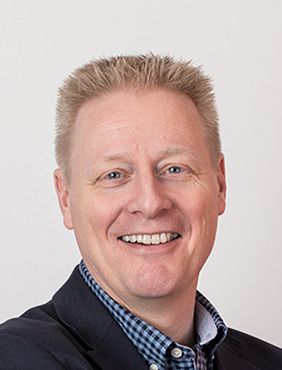Capturing Consent: Connecting HCPs with Scientific Content
“Healthcare professionals (HCPs) have always wanted scientific content, but I think it’s fair to say that the industry has not always delivered on the challenge of providing it,” says Jan van den Burg, CEO of Tangent90, a company that creates digital solutions to support pharma companies in their digital engagement with HCPs. “What HCPs have typically received has leaned more towards promotional content,” he adds. But with digital activities boosted by COVID in the last 18 months, pharma companies have found themselves more compelled to deliver on customer centricity. There is a shift now, says van den Burg, from the promotional to more scientific communications. Some large pharma companies have started formal programs to drive that shift. “We are seeing about 800 clinical papers being shared by each company; that equates to about a million clinical papers being shared collectively,” says van den Burg. Getting the right content to HCPs is critical for achieving the right engagement, he explains. But doing this in an increasingly virtual world has created new obstacles.
Van den Burg, along with Darren Feenan, global experience lead, customer-facing digital at Pfizer, sat down with Pharm Exec recently to discuss the issues of sharing scientific content with HCPs in an era of accelerated digitalization.
Pharm Exec: What are the barriers to sharing scientific content with HCPs digitally?
Jan van den Burg

Jan van den Burg: There are quite a few barriers, particularly when it comes to adhering to the regulatory and legal aspects of sharing journal articles. In Europe, these are seen as educational material, so in most European markets there is no need to track the Transfer of Value, for example, although many companies still do this. But in the US, anything over $11.05 needs to be reported from a Transfer-of-Value perspective, and this includes journal articles. So, whenever a pharma company sends an email to a physician with a journal article attached, the physician needs to accept that Transfer of Value. But this consent can be transient. HCPs can withdraw their consent, sometimes after a few weeks.
The tracking of both the physical and the digital distribution is also a barrier. From a contractual perspective, the number of journal articles purchased versus the number sent out to physicians needs to be tracked, and engagement needs to be tracked and fed back into the interaction tailoring.
Pharm Exec: Can you tell us what Pfizer is doing to optimize its distribution of scientific content in the digital era?
Darren Feenan

Darren Feenan: About a year ago, as a result of the COVID pandemic, I was trying to work out how we capture that ongoing consent, which Jan mentions, in a virtual world. We know it’s very easy to get customers to consent when you’re physically there with them; there’s a little bit of reciprocity and you’re building relationships with them. But it’s much more difficult when it’s done virtually. You lose some of that reciprocity and that relationship to drive the opportunity. I wanted to find a way to reimagine that experience and also focus on how scientific content can drive great engagement, engagement that adds significant value to the HCP and ultimately the patient. It’s not a surprise that COVID has forced us to look at how our commercial models are operating; I wanted to leverage some technology to reinvent that.
Pharm Exec: How does Tangent90’s offering meet these challenges?
Jan van den Burg: Put in the simplest terms, what Tangent90 does is provide the carrying mechanism to get the content from the publisher into the hands of the HCP, as facilitated by pharma. We don’t influence what content the HCP wishes to have and what life sciences companies wish to share. Our focus is on that carrying of the content, through whichever channel that might be. Our Trustrack solution manages, distributes, and tracks copyright content via instant messaging platforms, mass email, banner advertising, at virtual, hybrid or in-person meetings and events, or self-service on websites. It provides rich data on HCP scientific content consumption, channel use, value transfer and consent status. It also captures consent in seconds and makes HCP consent data available for CRM platforms or other platforms where consent is managed.
What has been Pfizer’s experience with Trustrack so far?
Darren Feenan: We started working with Tangent90, with their Trustrack solution, to capture that consent in a virtual capacity, whether it’s one-to-one, one to many, or during a webinar or a WebEx. We wanted to see whether we could actually increase the number of consents at the moment of the interaction. Would sharing that high-centered content during the webinars make the customers more willing to sign up? How could we demonstrate enhanced customer engagement and then capture the consent as part of sharing that scientific content? However, I wanted to go beyond that sharing of the content. For me, this is about connecting the journey. It’s about extending the relationship we have with customers. I want the engagements that we have with our customers to be based in science, because we know that’s what customers want.
I’ve been with Pfizer a long time and I’ve seen lots of commercial models come and go, but never have we experienced a situation where people had to stay at home, not leaving to go to the doctor’s office. So, re-imagining the way we capture consent and share content is critical, as is finding a strategic tool that we can use to really drive those scientific engagements and look at how we can extend the relationship beyond the initial direction that we have.
In terms of our use of Trustrack, it’s still early doors, we’re in the middle of proof-of-concept, but we have completed some work in Ireland and I can say we were very satisfied with the results. They were way better than anything that we were getting before. We now need to pressure test this solution elsewhere, and we start working in the UK, the Netherlands and Australia in the next few weeks.
The Misinformation Maze: Navigating Public Health in the Digital Age
March 11th 2025Jennifer Butler, chief commercial officer of Pleio, discusses misinformation's threat to public health, where patients are turning for trustworthy health information, the industry's pivot to peer-to-patient strategies to educate patients, and more.
Navigating Distrust: Pharma in the Age of Social Media
February 18th 2025Ian Baer, Founder and CEO of Sooth, discusses how the growing distrust in social media will impact industry marketing strategies and the relationships between pharmaceutical companies and the patients they aim to serve. He also explains dark social, how to combat misinformation, closing the trust gap, and more.